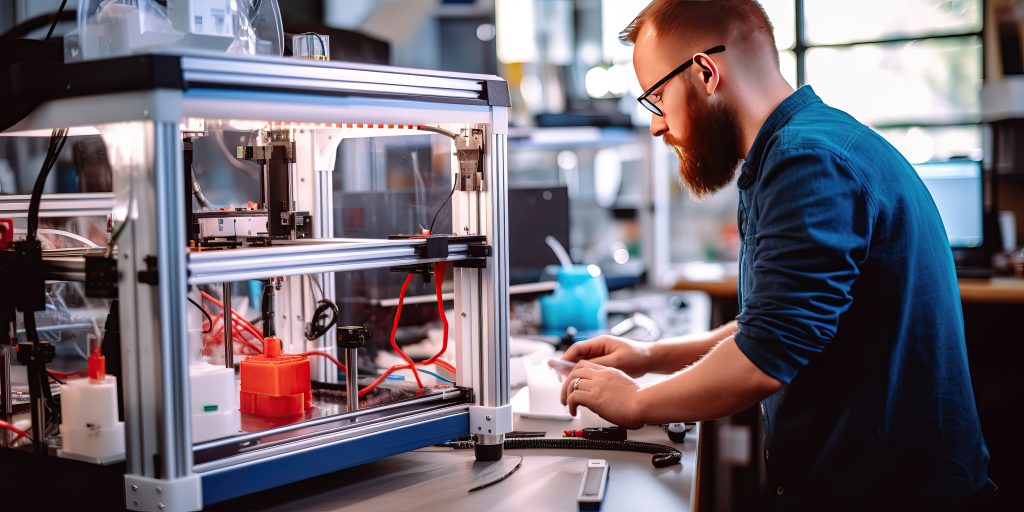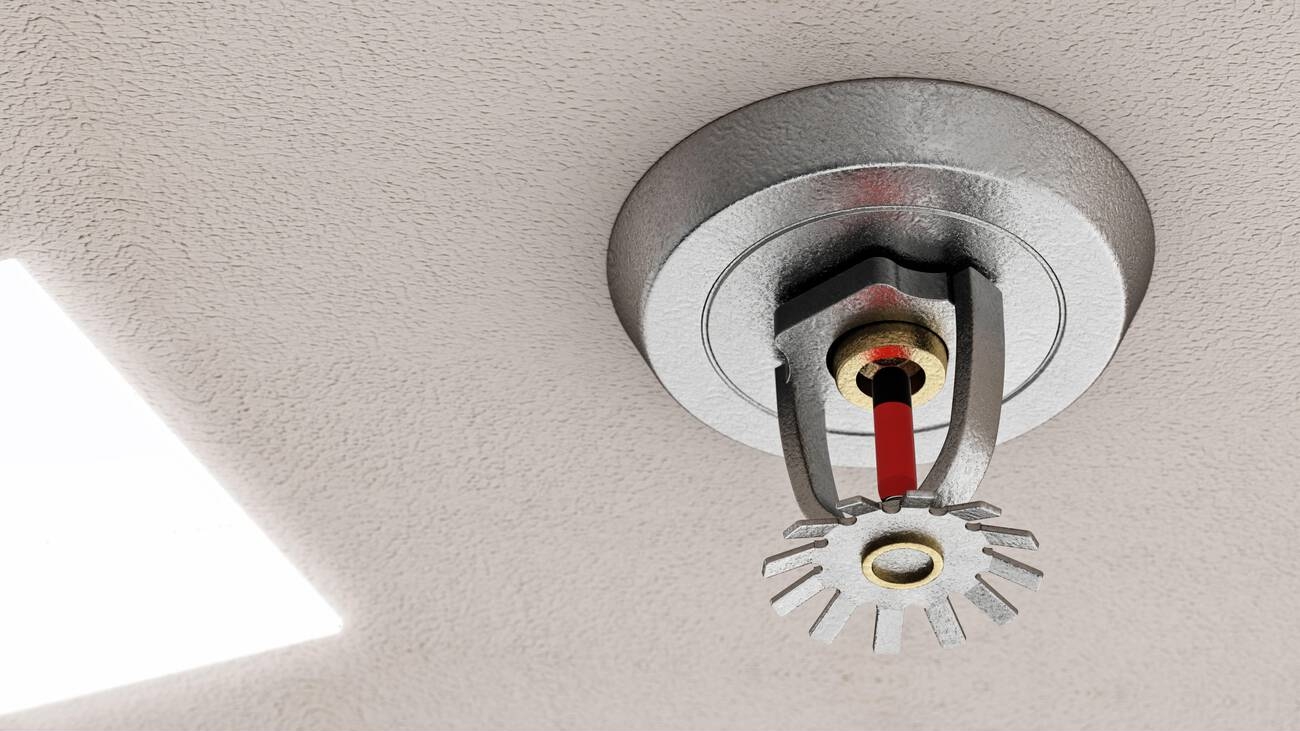Are you curious about the world of 3D printing? Ever wondered what it takes to be a 3D printing technician? In this article, we’ll explore the role of a 3D printing technician and the skills necessary for this dynamic profession. As a 3D printing technician, you’ll play a vital role in operating and maintaining printers, troubleshooting issues, and designing 3D printed products. Join us as we delve into the challenges, education, financial aspects, and opportunities that come with being a skilled technician in the exciting field of 3D printing.
Early Days in FDM/FFF Printing
What were the early days like for you as a 3D printing technician in the FDM/FFF printing industry? In the beginning, you gained valuable experience working in a garage with four machines. It was during this time that you learned the ins and outs of FDM/FFF printing techniques and honed your skills in troubleshooting and repairs. You even had the opportunity to build an entire printer through the Railcore project, which provided you with a deep understanding of the inner workings of these machines. As you progressed in your career, you found yourself working with consumer-level printers like Flashforge and Prusa. These printers presented their own set of challenges, with failures occurring at least once a week. However, you persevered and developed the skills necessary to manage a print queue, communicate with clients about their parts, and handle post-processing, packaging, and shipping. Overall, the early days as a 3D printing technician in the FDM/FFF industry were filled with technical challenges and a continuous learning process as you built your expertise in this rapidly evolving field.
Daily Responsibilities at MakeXYZ
As a 3D printing technician at MakeXYZ, your daily responsibilities involve managing the progression of overnight prints, checking filament supplies, handling failures that occur at least once a week, and maintaining a print queue while communicating with clients about their parts. You are responsible for monitoring the progress of overnight prints, ensuring that they are running smoothly and without any issues. This includes checking the print quality, adjusting settings if necessary, and troubleshooting any problems that may arise during the printing process. Additionally, you are in charge of checking the filament supplies to ensure that there is enough material for upcoming prints and ordering more if needed. When failures occur, which is expected to happen at least once a week, you are responsible for resolving them promptly and efficiently. This involves identifying the cause of the failure, troubleshooting the issue, and implementing the necessary fixes. Furthermore, you are responsible for maintaining a print queue and communicating with clients about their parts. This includes updating clients on the progress of their prints, answering any questions they may have, and ensuring that their requirements are met. Finally, you may also be involved in post-processing tasks such as cleaning, sanding, and finishing the printed parts before they are delivered to the clients.
A Change of Pace and Environment
How does transitioning to a new workplace and higher tech standards impact your role as a 3D printing technician? Adapting to change and transitioning to new environments can bring about a shift in perspective and workplace dynamics. As you move to a new workplace with higher tech standards, you will encounter a different set of challenges and opportunities. The introduction of higher-end machines like Markforged, Formlabs, Stratasys, and HP systems will require you to adapt to new technologies and processes. Your role as a 3D printing technician will involve checking printers daily and ensuring successful prints. With the use of high-end machines, you can expect fewer failures compared to consumer-level printers. In addition to monitoring the printing process, you will also be responsible for completing post-processing tasks specific to each technology, such as bead-blasting, dyeing, and washing. Quality control checks before shipping parts will also be part of your daily responsibilities. To prepare for subsequent jobs, cleaning and prepping systems will be necessary. Overall, transitioning to a new workplace with higher tech standards will require you to embrace change and adjust your skills and perspectives accordingly.
Daily Responsibilities at A3D
As a 3D printing technician at A3D, your daily responsibilities include operating and maintaining 3D printers, performing quality control checks on finished products, and troubleshooting and resolving any issues that arise. In the A3D work environment, you will be working with higher-end machines, such as Markforged, Formlabs, Stratasys, and HP systems, which require a higher level of expertise and precision. Your versatility and knowledge across different technologies and materials will be essential in ensuring successful prints.
Each day, you will start by checking the printers and ensuring that they are set up and calibrated correctly. Throughout the printing process, you will monitor the progress to ensure that the prints are running smoothly. With the higher-end machines, you can expect fewer failures, but if any issues arise, you will troubleshoot and resolve them promptly.
In addition to operating the printers, you will also be responsible for post-processing tasks specific to each technology. This may include tasks such as bead-blasting, dyeing, and washing. Before shipping the parts to the clients, you will conduct quality control checks to ensure that they meet the required standards.
To prepare for subsequent jobs, you will clean and prep the systems, making sure they are ready for the next set of prints. Your role as a 3D printing technician at A3D requires a high level of technical expertise, attention to detail, and the ability to adapt to different part types and geometries.
Challenges Faced by 3D Printing Technicians
Challenges faced by 3D printing technicians include navigating complexity, troubleshooting, and ensuring quality standards. As a technician, you must be prepared to tackle these challenges head-on in order to excel in your role. The table below outlines some of the main challenges you may encounter in the field, as well as potential solutions and growth opportunities:
| Challenges | Solutions |
|---|---|
| Navigating complexity | Stay updated on the latest advancements in 3D printing technology and materials. Attend training programs and workshops to enhance your knowledge and skills. |
| Troubleshooting | Develop a systematic approach to problem-solving. Familiarize yourself with common issues and their solutions. Utilize online resources and forums for troubleshooting guidance. |
| Ensuring quality standards | Implement rigorous quality control measures. Regularly calibrate and maintain 3D printers. Conduct thorough inspections of finished products to ensure they meet the required standards. |
| Industry applications | Stay informed about the diverse applications of 3D printing in various industries. Explore opportunities to work in specialized sectors such as healthcare, aerospace, automotive, and more. |
| Skill requirements | Continuously improve your technical skills in 3D modeling, software usage, and machine operation. Seek additional certifications and training programs to expand your skill set. |
| Growth opportunities | Take on challenging projects that push the boundaries of your skills. Seek leadership roles within your organization. Stay updated on industry trends and advancements to identify new growth opportunities. |
Education and Skills Required
To become a 3D printing technician, you need to acquire the necessary education and develop specific skills. Education plays a crucial role in preparing individuals for this role. While a degree in a field related to engineering or manufacturing is not always required, it can provide a strong foundation. Certification programs in drafting and design are also beneficial. In addition to formal education, training and hands-on experience are essential to becoming a skilled technician. Self-education through online resources and YouTube tutorials can be a viable option for learning 3D printing.
Specific skills are also required to excel in this role. Technicians must have a deep understanding of various additive manufacturing technologies and materials. They should be proficient in setting up and calibrating printers, as well as monitoring the printing process. Troubleshooting skills are crucial for identifying and resolving issues that may arise during printing. Quality control is another important aspect of the job, requiring attention to detail and the ability to perform post-printing tasks accurately. Overall, a combination of education, training, qualifications, and skills is necessary to succeed as a 3D printing technician.
Financial Aspect of Being a 3D Printing Technician
When considering a career as a 3D printing technician, it is important to understand the financial aspect involved in this field. The salary range for print technicians in the United States varies from $22,000 to $56,000, with the median salary falling around $40,000 to $42,000. However, these salaries can be influenced by factors such as location and experience. Job prospects for 3D printing technicians are promising due to the increasing demand for additive manufacturing in various industries. As the industry continues to grow, there is a need for skilled technicians who can operate and maintain 3D printers effectively. With the constant innovation and evolving technology in the field, the earning potential for 3D printing technicians is expected to grow. Financial stability can be achieved in this field as long as technicians stay updated with the latest advancements and enhance their skills accordingly. It is crucial to understand the industry demand and adapt to the evolving requirements to ensure a successful and financially stable career as a 3D printing technician.
Deeper Dive Into the Responsibilities
What are the key responsibilities of a 3D printing technician? As a 3D printing technician, your main responsibilities revolve around operating and maintaining 3D printers. You will be responsible for preparing printers for use and loading the required materials according to provided specifications. Additionally, you will need to perform quality control checks on finished products to ensure they meet the required standards. Troubleshooting and resolving any issues that arise during the printing process will also be part of your role.
To excel in this position, you will need a set of skills and training. Proficiency in operating and maintaining 3D printers is essential, as well as the ability to follow instructions accurately. You should also have a solid understanding of various 3D printing technologies and materials. Troubleshooting skills and the ability to quickly identify and resolve issues are crucial in ensuring smooth production.
As advancements in 3D printing technology continue to occur, you will face challenges in keeping up with new developments and adopting new techniques. Staying updated with the latest advancements and continuously enhancing your skills will be vital to your success as a 3D printing technician. Embracing these challenges and seeking opportunities for growth and learning will enable you to thrive in this dynamic field.
The Role of a 3D Printing Technician
As a 3D printing technician, your role involves operating and maintaining 3D printers to ensure smooth production and high-quality finished products. You play a crucial role in the manufacturing process, using your technical skills to set up and calibrate printers, monitor the printing process, and perform post-printing tasks. Your knowledge of various additive manufacturing (AM) technologies and materials is essential as you troubleshoot any issues that may arise and ensure that quality standards are met.
To excel in this role, you will need specialized training in 3D printing technician skills. This can include certification in drafting and design, a degree in mechanical drafting and design, and recommended classes in 3D printing/AM, engineering, and programming. Programming knowledge is particularly valuable as it provides a deep understanding of software and printer functionality. Additionally, self-education through online resources and hands-on experience building printers can be valuable for learning the intricacies of 3D printing.
In terms of salary, 3D printing technician salaries range from $22,000 to $56,000 in the U.S., with the median salary falling around $40,000 to $42,000. The job outlook for 3D printing technicians is promising, as the technology continues to evolve and create new career opportunities in various industries. With your skills and expertise, you can contribute to driving innovation and shaping the future of manufacturing.
Case Studies: Applications of 3D Printing in Various Sectors
To delve into the applications of 3D printing in various sectors, let’s explore some intriguing case studies that highlight the potential of this innovative technology. One case study involves Exaddon, a company that 3D prints tiny probes for semiconductor testing. The semiconductor industry, which powers devices, transport, and communication systems, faces a challenge in probe testing. Exaddon’s 3D printed probes contribute to improving the efficiency of the semiconductor industry.
Another case study involves the U.S. Navy, which is exploring 3D printing innovation. Bechtel Plant Machinery Inc. was awarded a contract to build a metal additive manufacturing (AM) facility to support the Navy. Metal AM has potential applications in the military and defense sectors. The development of metal AM facilities indicates future growth in this sector.
In addition to these case studies, it is important to consider the impact of accreditation on education. Accreditation ensures quality education and is granted by recognized organizations. Accredited colleges meet specific standards and offer benefits such as higher chances of employment, access to financial aid and scholarships, and transferability of credits to other accredited institutions. Accreditation also ensures recognition of degrees by employers and professional organizations, and provides opportunities for further education and advanced degrees.
These case studies and the impact of accreditation demonstrate the wide-ranging applications and benefits of 3D printing in various sectors. From semiconductor testing to military innovation, this technology is shaping the future of manufacturing and driving innovation in multiple industries.



